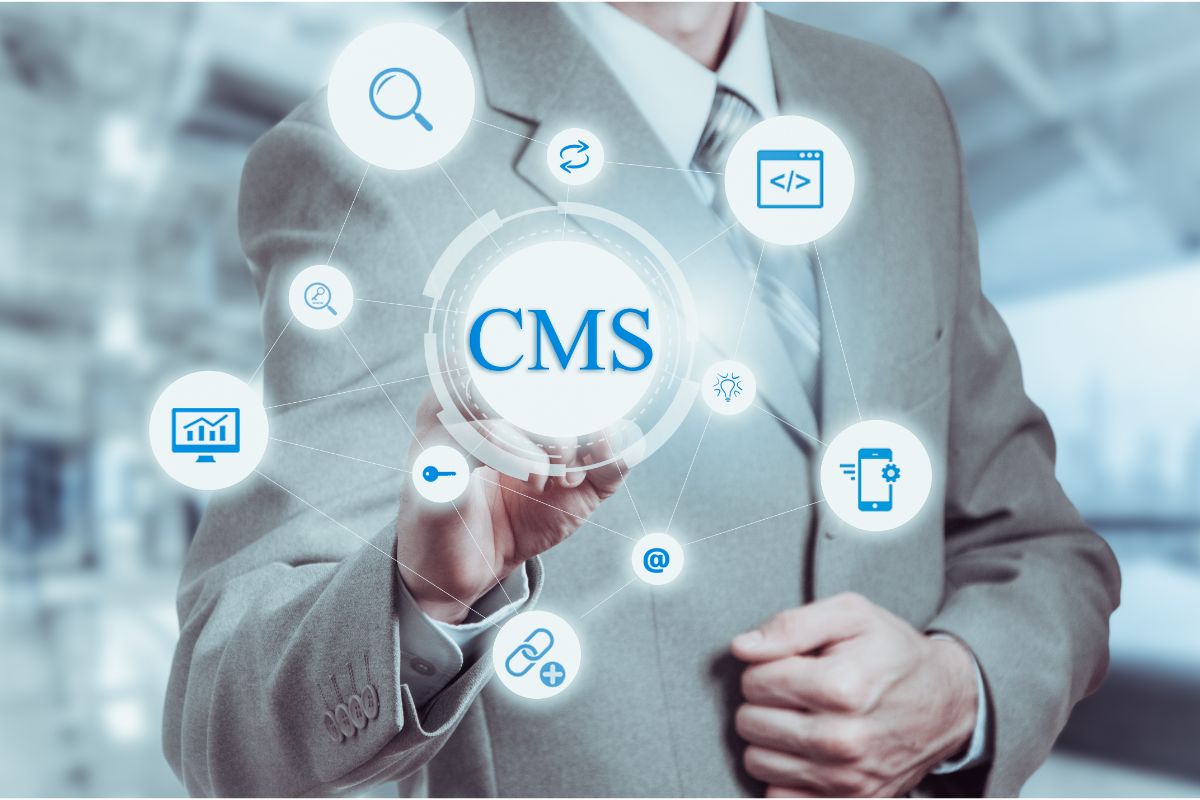Headless CMSs were created to live up to the digital requirements of the modern age. These systems can help companies concentrate on attracting customers through customized content over several channels.
As technology continues to develop, headless CMSs will become more common for enterprises that want to grow over the next decade.

Headless CMSs also have advantages and elements that make them better choices compared to classic CMSs.
We’ll cover some of these benefits in this article, including seven of the main advantages you’ll gain from switching from traditional CMSs to headless ones.
Keep reading to learn more about the benefits of Headless CMSs!
What Are Headless Content Management Systems?
Before we can get into the benefits, we need to understand what headless CMSs are. These systems don’t have a head or any front-end parts that handle how content is delivered to end users.
This allows the content to be displayed anywhere, over several channels by using an API, known as an application programming interface.
Once you eliminate the head or the presentation layer from the CMS, there aren’t any limitations that restrict where and how content can be sent out.
This ensures that customers get a seamless experience, viewing content on smartphones, desktops, smartwatches, and more.
The content doesn’t just cover blog posts and pages either. Headless CMSs can support other kinds of content, like news feeds, email banners, and pop-up forms.
Delivering content to various user experiences has a lot of benefits. These include being able to send out content more efficiently, as well as being able to connect with third-party software.
Despite this, keep in mind that the term ‘headless’ covers the front-end architecture, so it doesn’t have a presentation layer. This is why it’s crucial to keep a decoupled CMS architecture when using a headless CMS.
7 Reasons To Switch To A Headless CMS
Headless CMSs, sometimes referred to as decoupled CMSs, have become very popular as they allow marketers to deliver customer experiences over several different platforms.
Here are seven of the main reasons why headless CMSs could be a good fit for your company.
Great Omnichannel Experience
CMSs were first made to cater to websites, but as the technology updated from solely mobile and desktop to different platforms, including voice-activated software and smartwatches, new delivery layers were required.
This made uploading content more difficult, for both marketers and developers.
Traditional CMSs were made to handle website content, but today’s customers access content over several channels, which is why traditional systems cannot cater to these modern-day needs. Headless CMSs help with this issue.
For instance, having decoupled content management allows businesses to handle, upload, and edit posts and pages easily, without having to communicate with developers.

Non-technical users then have more command over their posts, which also speeds up the delivery of content.
Dividing these areas makes it simpler to attain brand consistency, particularly as businesses need to be able to send content through several areas, like apps, kiosks, digital signage, etc.
Decoupling content delivery and content editing give businesses the ability to create great experiences without a presentation layer.
This is very important to deliver a consistent and efficient customer experience over several channels, including ones in the future.
This is important when creating omnichannel experiences for customers. When omnichannel marketing is done well, this can lead to better customer satisfaction and retention which produces a greater yearly income as a result.
Freedom To Select CMS Solution
Headless CMSs decoupled content and presentation, delivering the benefits of headless architecture and traditional CMSs in one system.
Businesses can select whatever type of CMS suits their requirements, headless, traditional, or even hybrid.
Completely headless CMSs permit content to be sent through any presentation layer, but non-technical marketers may encounter challenges as they may lack the necessary skills.
Hybrid CMSs may help with this, as they use pre-existing front-end tools, employing APIs to link with back-end processes.
Marketers then have familiar and convenient templates and tools to issue campaigns and content to the necessary audiences.
Better Security
Monolithic CMSs might be convenient, but this means that security risks are higher, thanks to the out-of-box plugins, code, and files that are needed for built-in functions.
Monolithic CMSs, such as WordPress, provide plug-ins to add particular elements to a website, like web packs and widgets. These plug-ins may not be secure, which leaves websites at risk from hackers.
Headless CMSs don’t require lots of files, as they don’t need a database to send out content over devices. The content cannot be accessed from CMS databases as it can be from monolithic ones.
Instead, APIs take the content from a content storehouse, then send it toward the front-end.
Having the content storehouse away from the front end is important if hackers try to break into your website.
The housed content and website are kept apart from each other, making it less likely for hackers to take important information from your site.
Efficiency For Developers

Headless CMSs reduce the difficulties that arise with proprietary software. They allow you to select your desired programming language, as well as create your front-end and presentation layer, as they are API based.
Developers can continue with their tasks without needing to adapt to proprietary software restrictions.
Additionally, a piece of content can be used again and linked with other presentation channels, which helps to complete projects quicker.
Lower Upfront Costs
If you need to create a campaign and produce several microsites with new services, headless CMSs let the team start creating the products without waiting for templates from developers.
This reduces the upfront costs as you can begin creating smaller assets instead of beginning with a huge web development plan.
This also means that teams produce new websites and functions on existing portals a lot quicker compared to traditional CMSs.
Evergreen System
Needing to upgrade technology and move to different platforms once new projects begin is frustrating, and is another added cost for the business.
Headless CMSs let teams concentrate on producing valuable content, instead of always needing to upgrade systems from the outset.
Headless CMSs are also more scalable. For instance, if the back-end processes need maintenance or encounter any issues, the team won’t need to deal with any performance problems as they work on your website.
Better CMS Architecture
Headless CMSs are great for enterprises that make services and web platforms. They allow you to create and attain practice settings with good security and integrity.
Headless CMSs can help you create completely superior programming architecture. Websites made in this manner tend to be built so that the CMS platform and published content are divided.
Provided that the permissions settings and security are in order, this can lead to better protection, as access to the inner CMS can only be done within the business.
Content created away from the company can either be secured as required or internally approved.
Conclusion
As technology continues to develop, headless CMSs will become more and more necessary. They have several benefits, including better security, delivering a great omnichannel experience, and having lower upfront costs overall.
Compared to traditional CMSs, headless CMSs can meet the demands of the modern age, particularly for fast-growing businesses that need efficient marketing websites.
- The 20 Best Blogging Courses That Are For Beginners - December 7, 2022
- 20 Best WordPress Plugins For Blogs For Effective Blogging! - December 7, 2022
- 5 Excellent Affiliate Marketing Courses To Learn - December 6, 2022








